Top 10 Compare and Contrast Essay Examples for Teenagers
Compare and contrast essays offer teenagers a chance to explore and analyze the similarities and differences in topics that matter to them, like school, ... read more...friendships, technology, and pop culture. These examples will guide them in developing critical thinking and communication skills, helping them express their thoughts effectively.
-
Essay topic: School Uniforms and Casual Dress Code.
Answer:
For high school students, the choice between adhering to school uniforms or enjoying a casual dress code represents a significant aspect of daily school life. These choices differ in terms of self-expression, comfort, and the overall atmosphere they create within the school environment.
School uniforms are standardized outfits that students are required to wear, often consisting of specific colors, patterns, and accessories. The intention behind school uniforms is to promote a sense of unity, eliminate socioeconomic distinctions, and create a focused learning environment. Students wearing uniforms often have a consistent and formal appearance, contributing to a sense of discipline.
On the other hand, a casual dress code allows students to wear a variety of clothing styles within certain guidelines established by the school. This dress code provides students with the freedom to express their individuality through their clothing choices. Casual dress codes often permit a range of colors, styles, and accessories, allowing students to feel more comfortable and showcase their personal tastes.
One significant difference is in the realm of self-expression. School uniforms, with their standardized appearance, may limit students' ability to express their individuality through clothing. The focus is on a collective representation rather than personal style. In contrast, a casual dress code allows students to showcase their unique personalities and fashion preferences, fostering a sense of individual expression.
Consideration should also be given to comfort. School uniforms, while promoting a neat and formal appearance, may not always cater to individual comfort preferences. The standardized nature of uniforms might restrict movement and personal comfort. On the other hand, a casual dress code emphasizes comfort, allowing students to wear clothing that suits their preferences and daily activities, potentially enhancing their overall well-being.
Another aspect to consider is the overall atmosphere within the school environment. School uniforms contribute to a formal and disciplined atmosphere, emphasizing equality among students. This uniformity can create a sense of unity and focus on academic pursuits. Conversely, a casual dress code contributes to a more relaxed and diverse atmosphere, where students feel at ease expressing themselves through their clothing, potentially fostering a creative and inclusive environment.
In conclusion, the choice between school uniforms and a casual dress code in high schools involves considerations of self-expression, comfort, and the overall atmosphere within the school. School uniforms promote unity and discipline but may limit self-expression, while a casual dress code allows for individuality and comfort, contributing to a more relaxed and diverse school environment. The decision often reflects the values and goals of the school community.

Photo by Pixabay via pexels 
Photo by Andrea Piacquadio via pexels -
Essay topic: Summer Vacation and Winter Break.
Answer:
For high school students, the much-anticipated breaks of summer vacation and winter break mark distinct periods of leisure and relaxation, yet they differ in climate, activities, and the overall vibe they bring.
Summer vacation is synonymous with warm weather, long days, and a break from academic routines. During the summer, students often enjoy outdoor activities like swimming, hiking, and barbecues. The season offers an opportunity for travel, whether to the beach or family vacations, allowing students to explore new places and create lasting memories. The extended daylight hours provide more time for recreational pursuits and bonding with friends and family.
In contrast, winter break brings a different ambiance with its colder climate and festive atmosphere. This break often coincides with holidays like Christmas and New Year's, creating a sense of warmth and celebration. Winter activities include building snowmen, skiing, and cozy indoor gatherings. The season fosters a sense of togetherness, with families often coming together to celebrate traditions and share in the joy of the holidays.
One significant difference is the climate during these breaks. Summer vacation offers warmth and sunshine, encouraging outdoor adventures and a more relaxed lifestyle. In contrast, winter break introduces colder temperatures and the potential for snowfall, setting the stage for winter-themed activities and festive traditions.
Consideration should also be given to the activities associated with each break. Summer vacation invites activities that embrace the outdoors, fostering a sense of freedom and exploration. Water-based activities, in particular, become popular. On the other hand, winter break emphasizes indoor and snow-related activities, encouraging a cozy and festive atmosphere.
Another aspect to consider is the overall vibe of each break. Summer vacation radiates a carefree and adventurous vibe, encouraging students to unwind and enjoy the warmth of the season. In contrast, winter break exudes a cozy and festive vibe, emphasizing the joy of holidays and creating cherished moments with loved ones.
In conclusion, the breaks of summer vacation and winter break offer high school students distinctive experiences in terms of climate, activities, and overall atmosphere. Summer brings warmth and outdoor adventures, while winter introduces a festive and cozy ambiance. Both breaks provide essential opportunities for relaxation, exploration, and creating lasting memories.

Photo by Pixabay via pexels 
Photo by Pixabay via pexels -
Essay topic: Weekdays and Weekends.
Answer:
For high school students, the distinction between weekdays and weekends is not merely a matter of time but represents a shift in routines, responsibilities, and leisure activities. Both days serve unique purposes in the life of a student, differing in structure, expectations, and the overall feel they bring.
Weekdays are characterized by structured routines and academic commitments. Students wake up early, attend classes, and engage in various educational activities. The weekdays are centered around learning and completing assignments, with a focus on academic responsibilities. The atmosphere during weekdays is more formal and task-oriented, emphasizing the importance of education and personal development.
In contrast, weekends offer a departure from the structured nature of weekdays. They are a time for relaxation, leisure, and pursuing personal interests. Students have the freedom to sleep in, spend time with friends and family, and engage in hobbies or recreational activities. Weekends provide a mental break from academic pressures, fostering a more laid-back and enjoyable atmosphere.
One significant difference is the structure of these days. Weekdays follow a consistent routine, with specific times allocated for classes, study sessions, and extracurricular activities. On the other hand, weekends lack the rigid structure of weekdays, allowing for a more flexible and spontaneous approach to how time is spent.
Consideration should also be given to the expectations associated with each. Weekdays are associated with academic responsibilities and the pursuit of knowledge. Students are expected to attend classes, complete assignments, and actively participate in their educational journey. Weekends, in contrast, come with fewer academic expectations, allowing students to recharge and focus on personal well-being.
Another aspect to consider is the overall feel of these days. Weekdays are often characterized by a sense of purpose and productivity, as students work towards their academic goals. In contrast, weekends bring a more relaxed and carefree vibe, offering a break from the pressures of school and providing an opportunity for socializing and enjoyment.
In conclusion, the distinction between weekdays and weekends for high school students goes beyond the calendar. Weekdays are structured and focused on academic pursuits, while weekends offer a break, allowing for relaxation and personal enjoyment. Both play crucial roles in the life of a student, providing a balance between academic responsibilities and personal well-being.

Photo by Pixabay via pexels 
Photo by Pixabay via pexels -
Essay topic: Public Transportation and Walking.
Answer:
For high school students, the modes of public transportation and walking represent two distinct ways of commuting, each with its own set of advantages and considerations. These modes differ in terms of convenience, impact on health, and the overall experience they offer.
Public transportation provides a convenient and efficient way for students to travel, especially in urban areas. Buses, trains, or trams offer a collective means of commuting, often saving time and providing a consistent schedule. Public transportation is practical for longer distances, allowing students to reach school or other destinations comfortably. However, it may involve waiting for scheduled services and adhering to fixed routes.
On the other hand, walking is a simpler and more traditional mode of commuting. It offers health benefits, as walking is a form of exercise that contributes to physical well-being. For short distances, walking can be a practical and eco-friendly option. However, it requires more time compared to public transportation, and weather conditions can influence its feasibility.
One significant difference is the convenience these modes offer. Public transportation is known for its efficiency, providing a faster way to reach destinations, especially when the distance is considerable. It allows students to relax during the journey, engage in other activities, and avoid the physical exertion of walking longer distances. On the other hand, walking may take more time, but it offers a straightforward and reliable way to commute for shorter distances, promoting a more active lifestyle.
Consideration should also be given to the impact on health. Public transportation involves less physical activity during the commute, as students primarily sit or stand while being transported. In contrast, walking is a form of exercise that contributes to better cardiovascular health, improved fitness, and overall well-being. The health benefits associated with walking make it an attractive option for those who prioritize physical activity.
Another aspect to consider is the overall experience. Public transportation provides a sociable environment, allowing students to interact with others during the commute. It offers a chance to relax, read, or listen to music. On the contrary, walking provides a more solitary experience, offering time for personal reflection and enjoying the surroundings. It allows students to connect with the environment in a more direct way.
In conclusion, the choice between public transportation and walking for high school students depends on various factors, including distance, time constraints, health considerations, and personal preferences. Both modes offer unique advantages, and the decision often involves balancing convenience, health, and the overall experience of commuting.
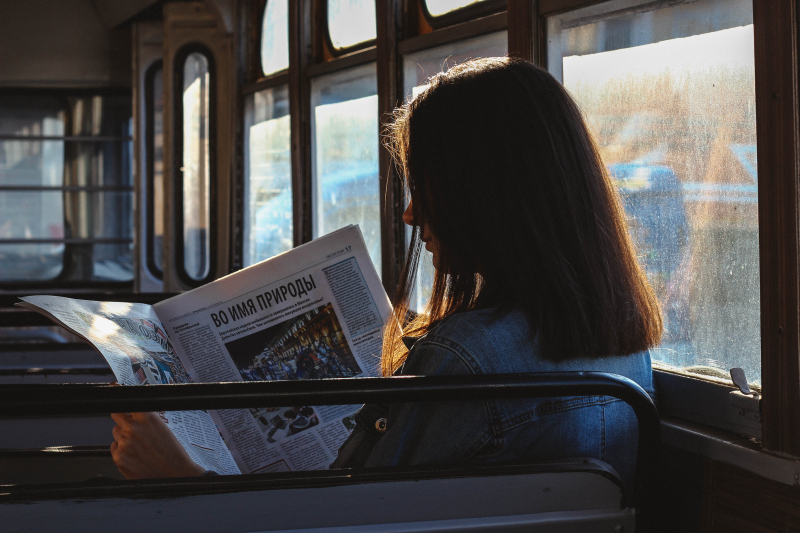
Photo by Artem Malushenko via pexels 
Photo by Pixabay via pexels -
Essay topic: Listening to Podcasts and Reading Books.
Answer:
For high school students, the choices between listening to podcasts and reading books represent two distinct ways of consuming information and entertainment, each offering unique advantages and considerations. These approaches differ in terms of accessibility, engagement, and the overall experience they provide.
Listening to podcasts is a modern and accessible way for students to gather information or enjoy stories. Podcasts cover a wide range of topics, and students can easily access them using smartphones or computers. This mode of learning is convenient for multitasking, allowing students to absorb information while doing other activities. However, it may lack the tactile and visual engagement that reading books offers.
Reading books, a more traditional and time-tested approach, involves the physical act of flipping through pages or scrolling through e-books. Books provide a tangible and immersive experience, allowing students to delve deeply into narratives or explore academic subjects at their own pace. However, this method might demand more focused attention and dedicated time compared to the flexibility offered by podcasts.
One significant difference is the accessibility these modes provide. Listening to podcasts allows students to absorb information while commuting, exercising, or completing other tasks. It caters to the modern, fast-paced lifestyle, offering learning opportunities on the go. Conversely, reading books often requires a dedicated time and place, as it demands more focused attention and engagement.
Consideration should also be given to the engagement each mode offers. Listening to podcasts is a more passive activity, allowing students to absorb information without actively reading or interpreting text. It provides a sense of companionship through the voices and discussions presented in the podcasts. On the other hand, reading books requires active participation, as students engage with the text, imagine scenes, and visualize characters. It offers a more immersive and personal experience.
Another aspect to consider is the overall experience. Listening to podcasts provides a dynamic and auditory experience, often accompanied by music or sound effects. It caters to different learning styles and preferences. In contrast, reading books offers a more contemplative and introspective experience, allowing students to lose themselves in the world created by the author.
In conclusion, the choice between listening to podcasts and reading books for high school students depends on various factors, including lifestyle, preferences, and learning styles. Both approaches offer valuable ways to gather information and enjoy stories, and the decision often involves balancing accessibility, engagement, and the overall experience of learning or entertainment.
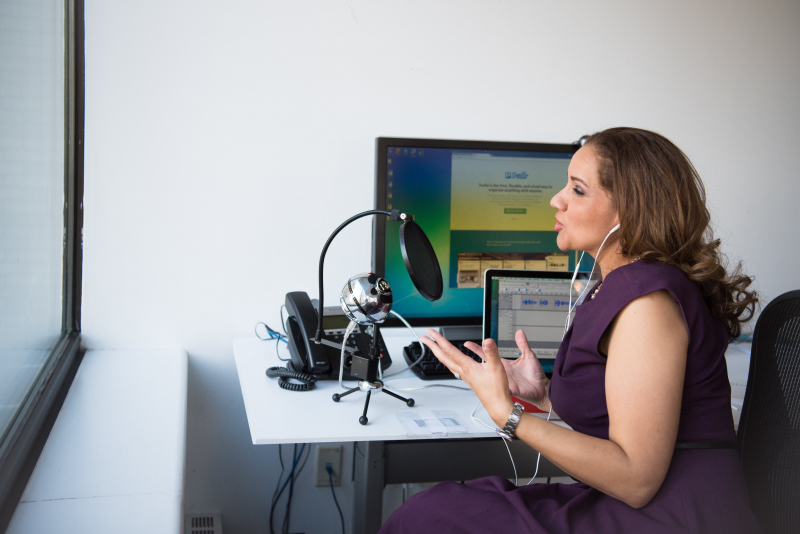
Photo by Christina Morillo via pexels 
Photo by Pixabay via pexels -
Essay topic: Cooking at Home and Eating Out.
Answer:
For high school students, the choices between cooking at home and eating out present distinct ways of satisfying hunger, each with its own advantages and considerations. These approaches differ in terms of cost, health implications, and overall experience.
Cooking at home is a practical and cost-effective way for students to prepare meals. It allows them to control ingredients, experiment with recipes, and tailor meals to personal preferences. While cooking requires time and effort, it often proves more economical in the long run. However, it demands planning and the willingness to engage in the cooking process.
Eating out, on the other hand, offers convenience and a break from meal preparation. It provides an opportunity to enjoy a variety of cuisines without the hassle of grocery shopping and cooking. However, dining at restaurants or ordering takeout can be more expensive compared to home-cooked meals. Additionally, the options available may not always align with dietary preferences or health-conscious choices.
One significant difference is the cost associated with each option. Cooking at home generally requires purchasing groceries, which can be more budget-friendly in the long term. Students can buy ingredients in bulk and have leftovers for future meals. Conversely, eating out involves paying for the convenience of having someone else prepare and serve the meal, often making it more expensive.
Consideration should also be given to the health implications of these choices. Cooking at home allows students to control the ingredients and portion sizes, promoting healthier eating habits. It offers the flexibility to incorporate fresh and nutritious components into meals. In contrast, eating out may involve consuming larger portions, hidden ingredients, or excessive amounts of unhealthy additives commonly found in restaurant dishes.
Another aspect to consider is the overall experience. Cooking at home fosters a sense of accomplishment and culinary skills. It provides an opportunity for students to bond with family or roommates over shared meals. Conversely, eating out offers a social experience, the pleasure of trying new dishes, and the chance to enjoy the ambiance of a restaurant setting.
In conclusion, the decision between cooking at home and eating out for high school students depends on various factors, including budget considerations, health priorities, and personal preferences. Both approaches offer unique benefits, and the choice often involves balancing the convenience, cost, and overall experience of meal preparation and consumption.

Photo by On Shot via pexels 
Photo by Pixabay via pexels -
Essay topic: Waking Up Early and Staying Up Late.
Answer:
For high school students, the decision to wake up early or stay up late revolves around personal habits, productivity, and lifestyle preferences. Each choice comes with its own set of advantages and considerations, shaping the daily routines and experiences of students.
Waking up early is often associated with increased productivity and a sense of discipline. It allows students to start their day with a fresh mind and take advantage of the morning hours for focused tasks and activities. Rising early can contribute to better time management and a routine that aligns with traditional schedules, such as school or work hours. However, it requires going to bed early to ensure sufficient sleep.
On the other hand, staying up late provides a different set of opportunities. It offers a quiet and undisturbed time during the night for studying, creative pursuits, or leisure activities. Night owls often find that they are more alert and creative during these late hours. However, the challenge lies in managing sleep schedules to ensure enough rest despite staying up late.
One significant difference between the two choices is their impact on productivity. Waking up early allows students to tackle tasks with a fresh mind, take advantage of morning calmness, and potentially enhance their focus. Conversely, staying up late may be beneficial for those who feel more alert and creative during the nighttime, finding it an ideal period for completing assignments or engaging in personal projects.
Consideration should also be given to the social aspects of each choice. Waking up early may align better with traditional social schedules, making it easier to engage in morning activities or spend time with family and friends during the day. On the other hand, staying up late might be more suitable for socializing with peers who share similar nocturnal habits.
In conclusion, the choice between waking up early and staying up late for high school students is influenced by personal preferences, productivity patterns, and social considerations. Each option offers its own unique advantages, and the decision often revolves around finding a balance that fits an individual's lifestyle and maximizes their effectiveness in both academic and personal pursuits.

Photo by Tirachard Kumtanom via pexels 
Photo by Pixabay via pexels -
Essay topic: Personal Goals and Team Goals.
Answer:
In high school, students often encounter the dynamic between personal goals and team goals, each playing a crucial role in shaping their academic and extracurricular experiences. While personal goals focus on individual achievements and growth, team goals emphasize collaboration and shared success.
Personal goals revolve around individual aspirations and achievements. These are unique to each student and may include academic accomplishments, skill development, or personal milestones. For instance, a personal goal might be to achieve high grades in specific subjects, improve proficiency in a particular skill, or participate in leadership roles within the school community. Personal goals provide a sense of direction and purpose, encouraging students to pursue their passions and areas of interest.
On the other hand, team goals are collective objectives that involve collaboration and coordination among group members. These could be related to sports teams, academic projects, or extracurricular activities. Team goals focus on achieving success as a group, emphasizing the importance of communication, cooperation, and shared responsibility. For example, a sports team might set a goal to win a championship, while a study group may aim to excel in a group project.
One significant difference between personal and team goals lies in their focus and scope. Personal goals are centered around individual achievements and growth, allowing students to tailor their ambitions according to their interests and strengths. In contrast, team goals require individuals to work together towards a common objective, fostering a sense of unity and shared accomplishment.
Moreover, the motivation behind personal and team goals differs. Personal goals are often driven by an individual's desire for self-improvement and personal satisfaction. In contrast, team goals are motivated by the collective success and the understanding that collaboration enhances the overall performance of the group.
While both personal and team goals have their merits, high school students often find themselves balancing the pursuit of individual aspirations with the collaborative efforts needed to achieve shared objectives. This dual focus prepares students for the multifaceted challenges they may encounter in academic, professional, and social settings beyond high school. Balancing personal and team goals ensures a well-rounded and enriching high school experience, fostering both individual growth and a sense of community.

Photo by Pixabay via pexels 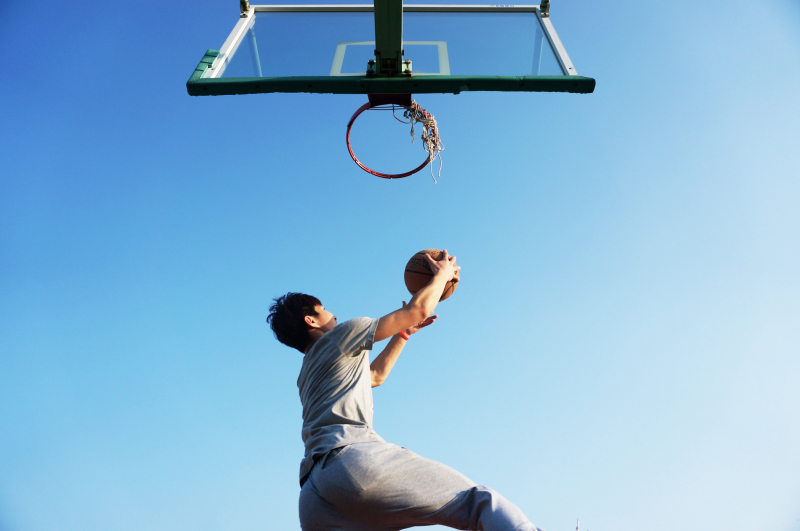
Photo by Pixabay via pexels -
Essay topic: Outdoor Activities and Indoor Activities.
Answer:
For high school students seeking ways to spend their leisure time, the choice between engaging in outdoor activities and indoor activities holds importance. These choices differ in terms of exposure to nature, social interactions, and the overall atmosphere they provide.
Outdoor activities involve pursuits that take place in natural settings, such as parks, beaches, or hiking trails. These activities often expose individuals to fresh air, sunlight, and the beauty of the outdoors. Common outdoor activities include hiking, picnics, sports, and nature walks. Engaging in these activities allows individuals to connect with nature and experience the benefits of physical exercise in an open environment.
On the other hand, indoor activities encompass a range of pursuits that occur within enclosed spaces, such as homes, community centers, or recreational facilities. Indoor activities include board games, watching movies, reading, or participating in indoor sports. These activities offer a controlled environment where individuals can enjoy leisure time regardless of external weather conditions.
One significant difference is the exposure to nature. Outdoor activities provide a direct connection to the natural world, offering opportunities to appreciate the beauty of landscapes and enjoy the therapeutic effects of being outdoors. This exposure contributes to a sense of well-being and relaxation. In contrast, indoor activities provide a sheltered setting, shielding individuals from external elements and offering a controlled space for recreational pursuits.
Consideration should also be given to social interactions. Outdoor activities often encourage social engagement with others who share similar interests. Whether playing team sports or enjoying a picnic with friends, outdoor activities foster a sense of camaraderie. On the other hand, indoor activities may provide a more intimate setting for social interactions, such as playing board games or watching movies with a small group of friends.
Another aspect to consider is the overall atmosphere. Outdoor activities offer a dynamic environment influenced by the weather, natural surroundings, and seasonal changes. This dynamic setting can contribute to a sense of adventure and spontaneity. Conversely, indoor activities provide a more controlled atmosphere, allowing individuals to create a comfortable and predictable environment for their leisure pursuits.
In conclusion, the choice between outdoor activities and indoor activities depends on personal preferences, interests, and the desired atmosphere for leisure time. Outdoor activities offer exposure to nature and social engagement, while indoor activities provide a controlled setting for recreational pursuits. The decision ultimately rests on individual preferences and the type of experience one seeks during their leisure moments.
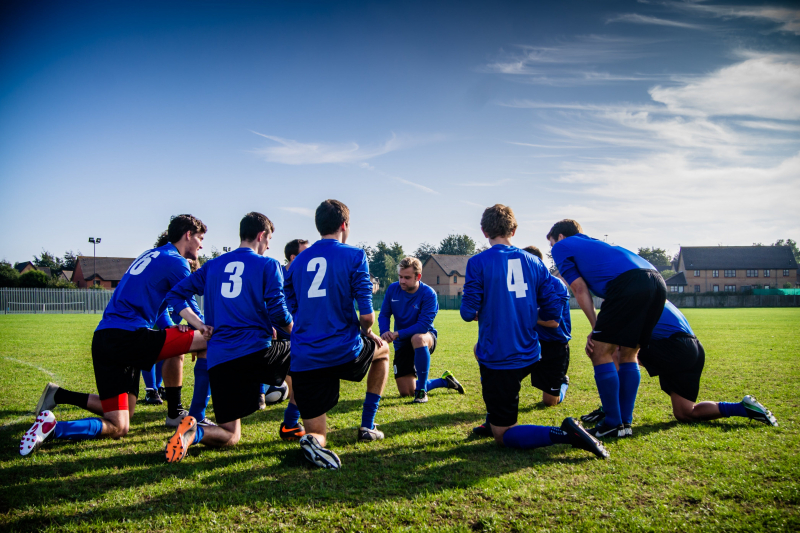
Photo by Pixabay via pexels 
Photo by Ivan Samkov via pexels -
Essay topic: High School and College Life.
Answer:
High school and college are two distinct phases in a student's life, each offering unique experiences and challenges. These stages vary in terms of academic structure, social dynamics, and personal responsibilities.
High school life is characterized by a structured and mandatory curriculum, where students follow a predetermined schedule of classes. The subjects are diverse, covering a broad range of topics. In contrast, college life provides more flexibility, allowing students to choose their majors and customize their academic paths based on their interests. The academic environment in college is more specialized, delving deeper into specific subjects.
One significant difference is the level of personal responsibility. In high school, teachers often guide students closely, and parents may be involved in monitoring academic progress. College, however, demands greater independence. Students must manage their time efficiently, attend classes regularly, and take initiative in their studies. The transition from a more structured high school environment to the autonomy of college can be a significant adjustment.
Another distinction lies in the social dynamics. High school tends to be a more close-knit community where students often know everyone in their grade. Friendships and social circles are typically formed within the same age group. In college, the social landscape is broader and more diverse. Students interact with peers of various ages and backgrounds, fostering a more expansive and inclusive social environment.
In terms of extracurricular activities, high schools often offer a range of clubs and sports teams. Participation is encouraged, and students may explore different interests. Colleges also provide diverse extracurricular opportunities, but the scale is often larger, and students have the freedom to create and lead their clubs and events.
Lastly, the grading system differs between high school and college. High schools often use a letter-grade system (A, B, C, etc.), while colleges may utilize a GPA system. The college grading system may be more nuanced, with different weightings for various courses.
In conclusion, high school and college life present distinct experiences. High school offers a structured and supportive environment, while college demands greater independence and personal responsibility. The transition between these phases marks a crucial period of growth and adaptation for students as they navigate the unique challenges and opportunities each stage provides.

Photo by Buro Millennial via pexels 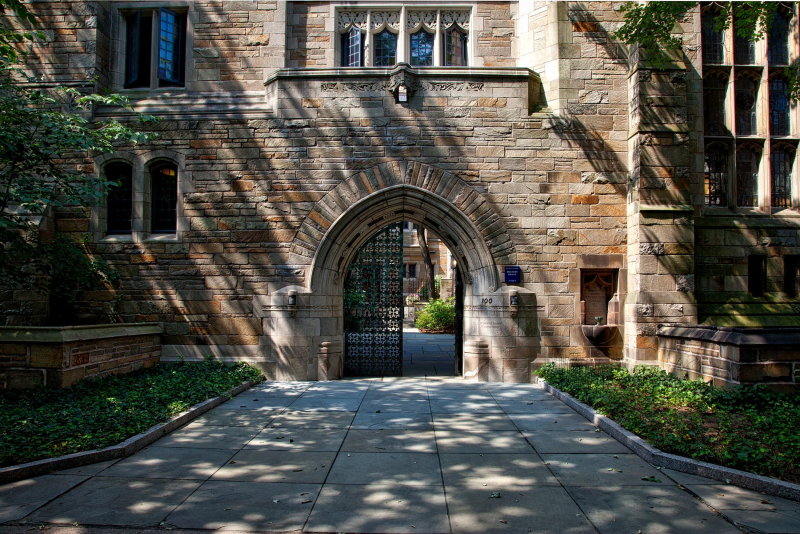
Photo by Pixabay via pexels





















